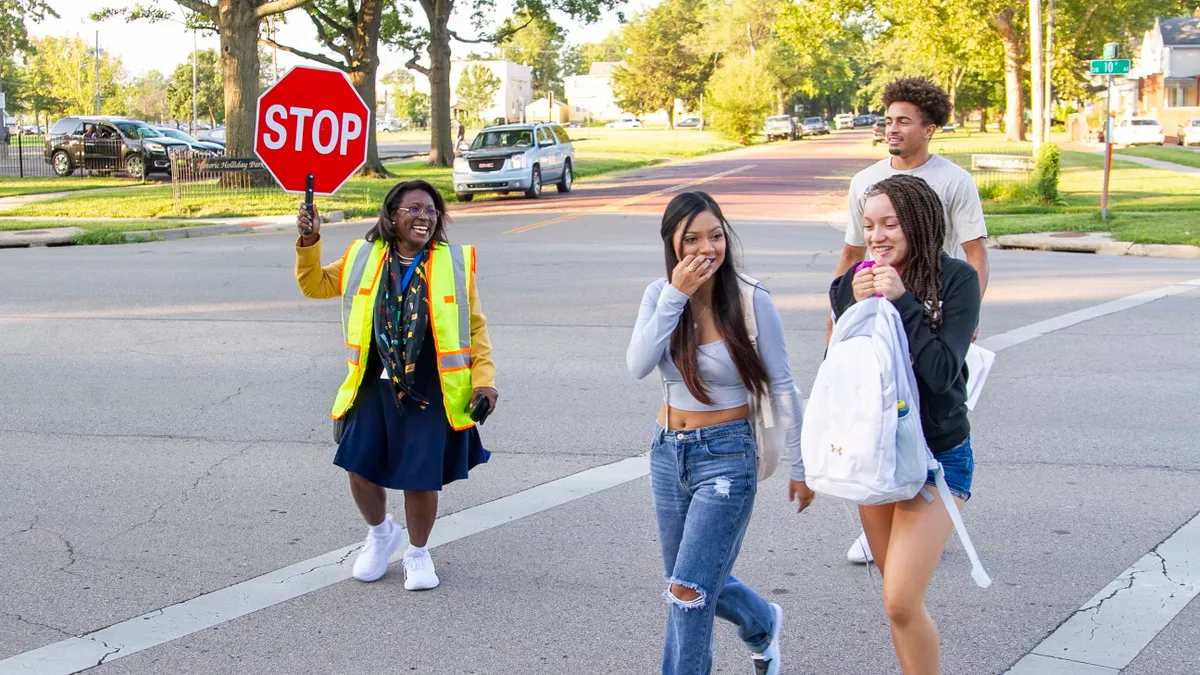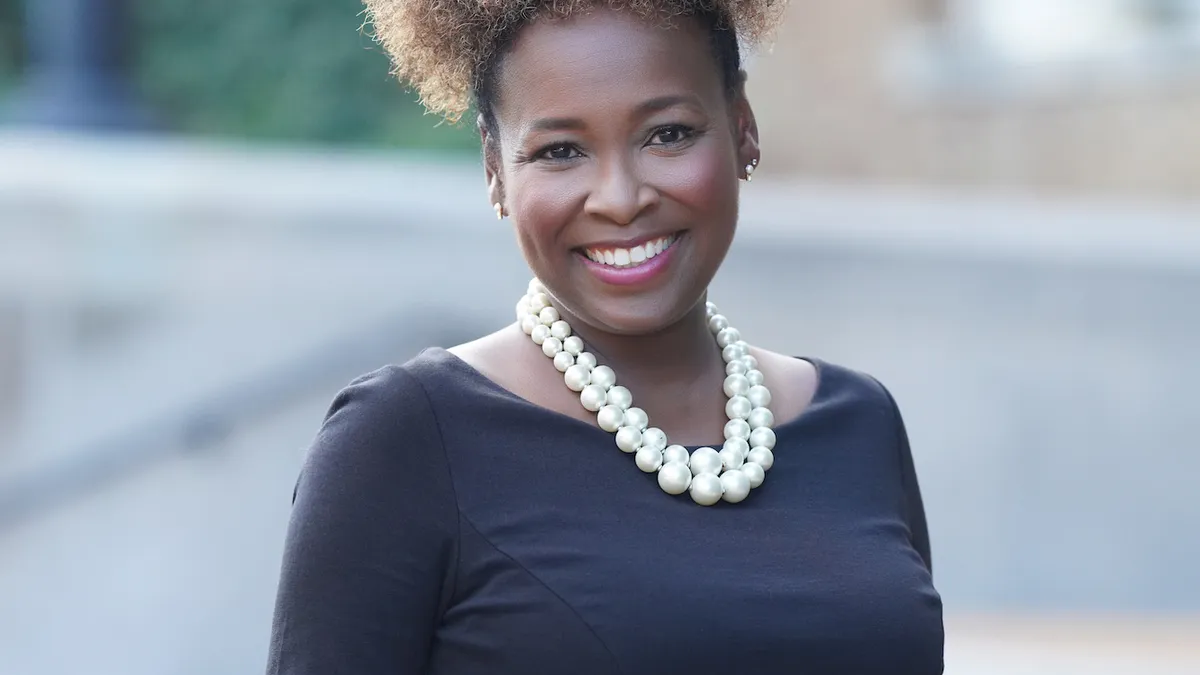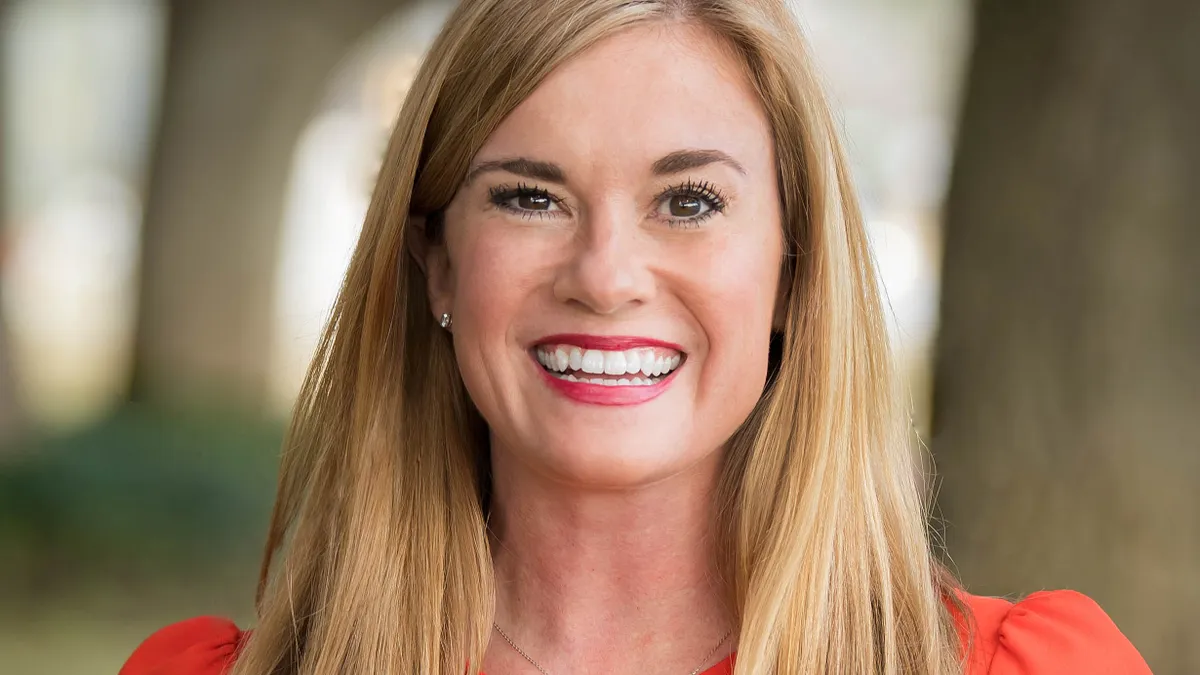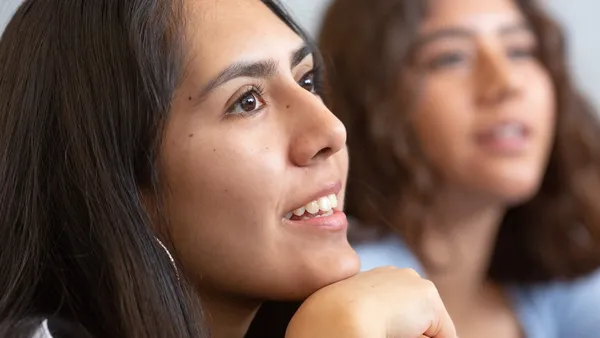Lessons In Leadership is an ongoing series in which K-12 principals and superintendents share their best practices and challenges overcome. For more installments, click here.
Located in a town of around 9,300 residents, one Massachusetts high school is helping set the standard for inclusive practices across New England — and it’s largely been made possible by a principal’s willingness to prioritize student and staff voice.
“Even if they don't really have — as they shouldn't or usually don't — a firm understanding of what implicit bias is at age 16, they do know they don't want to see racism happen in their school,” said Sutton High School Principal Ted McCarthy.
Over 10% of the school’s 378 students currently participate in the school's Connections group, which was formed to help address racism, sexism and homophobia — and prevent them from occurring in the first place. The Connections group has since produced its own conference attended by students and educators from across the region.
“I believe that's because students are wired to want to do good in the world. They want to be part of the solution. They want to help others,” McCarthy said.
We recently caught up with McCarthy — currently in his 10th year at Sutton and 27th in K-12 education overall — to learn more about Connections, how he lifts student and staff voice, and what those opportunities look like in action.
Editor’s Note: The following interview has been edited for brevity and clarity.
K-12 DIVE: One of the hallmarks of your leadership is a focus on encouraging students and teachers to play larger roles in shaping the direction of the school. How do you go about making sure those opportunities are available?
TED MCCARTHY: I always say that of all the things people like about our school — I mean, we can talk about the internship program, our advisory block, graduation credits, the dress code policy — almost all of those started with a conversation with a staff member or a student and was like, “How come we do it this way?” And a deeper dive into, “Let's look and check and see why we do it that way, and does it really have to be that way?”
This is the byproduct of a really small school, but the kids have opportunities to just walk into my office and say, “Hey, Mr. McCarthy. Can we have X, Y or Z?”
A couple years ago … a couple students said, “How come we never do a service trip?” And I'm like, “Because no one ever asked to do a service trip.” And then, less than a year later, the school nurse, 13 kids and I are in Haiti on a service trip.
Just because of the way the school operates, it really empowers kids and staff to just walk into [the office of] either myself or the assistant principal or the guidance staff and just say, “What do you think about this?” And then it just starts a larger conversation.
We do have some formal structures in place. I have a student advisory board I meet with once a month, and that's a random assortment of kids who meet with me and talk about what's going on in school and how can we do better, what's going well. Sometimes it centers around how long the panini line is in the lunchroom, and sometimes it talks about, “Why is the cell phone policy the way that it is?” So that varies.
But I often find it's usually the more informal [interactions], kids just coming up to me during lunch or popping into my office at the beginning or the end of the day, that gets the better conversation going.
Using the internship program or service trips or dress code as an example, could you walk through how the student voice and staff voice process works?
MCCARTHY: Sure. The dress code was my first year here, so that was back in 2013. A group of girls came to see me, and they said, “We think the dress code is sexist.” In many high schools, if you read the dress code, it's completely aimed at girls. It talks about, like, the skirts and it talks about spaghetti straps and bare midriffs. And I went, “You’re right.” And of course, there's staff who feel the other way, that there's a quote-unquote “appropriate” way to dress and an “inappropriate” way to dress. And girls are saying, “What about my body is inappropriate? Please explain.”
So, we had a sit-down meeting with the students and staff who supported a change in the policy and staff who didn't support a change in the policy. And we talked it out. We agreed that the language in the dress code policy was sexist and that we could do better. The kids wrote the dress code policy. They provided it to me, obviously, [and] we talked and did a little work, but most of the words that are in the dress code policy come from the students. They presented it to the school committee, and now that's been our dress code policy for nine years.
Looking back, it could be something where kids saw that they had an idea, ran with it, went to the right people, actually affected change, and then it empowered them to know that could happen on a number of fronts.
You oversaw the creation of a school Connections group. Can you tell me about that and what led to the push for it?
MCCARTHY: When I first started at Sutton High School, just like any school, we had a number of incidents that were centered around homophobia, sexism, racism. And in the beginning of my time there, we were dealing with them as one-offs.
So a kid brings a Confederate flag into school and shoves it in the face of a student of color, we deal with it. We went from gendered gowns to non-gendered gowns for graduation. There was a community uproar. We dealt with it, and we moved on. We had a student who reported someone had called them the N word, and we [discipline] the student, but we were always just dealing with the symptoms and not the root of the cause.
After enough of those incidents went by, myself and the staff member who does a lot of this work with me — Coleen Motyl-Szary — decided we were just gonna do something a little bit different with how we talked with our community about issues of social justice.
We had a faculty meeting where I laid out these series of incidents over my first couple of years as principal, and I said, “Is this acceptable to anybody?” The answer was obviously “No.” And then I'm like, “Well, what should we do?”
From that, the Connections group was born. Connections for us at Sutton High School is a group of students and teachers who work together to educate our community on the dangers of racism, sexism, and homophobia; educate them on what privilege and bias really mean; and make our school a more welcoming place for all, regardless of who you are.
[Older] students, after they get training, run a series of workshops for our 9th graders. In January every year, I send a letter home to the parents and caregivers of our 9th graders, and it says something to the effect of, “In the coming weeks, your son or daughter will have the opportunity to participate in a workshop where they can learn more about issues like racism, bias and privilege, because we believe that those issues are important to kids, and taking time away from class is meaningful and should happen because these are real things that impact their lives.”
Parents are given the opportunity to opt their student out of the workshops. Prior to last year, I had zero parents opt out. Coming out of all the CRT [critical race theory] wars, we had 11 students opt out.
When the Connections workshops happen, we break up our 9th graders into what we call families. And that family group stays with the same adult advisor.
The idea is that we want our 9th grade students, our youngest students, to understand our values and what we stand for and what we want our school to be right from when they get to school. And we also want our older students given opportunities for leadership and to model the kind of behavior and values we also wanna see. So it's a nice model that's worked for us. I think this is our sixth year doing it.
And there’s a conference now, too?
MCCARTHY: At the end of those connections workshops, our culminating event of the year is our Connections Conference, where we invite schools from all over the state and all over New England, really, to come to Sutton for a day where they can participate in workshops with presenters from all over the United States.
It's an opportunity to bring people together for one day to inspire them to keep doing the work they're doing, to connect with others who are doing the work, and hopefully leave feeling empowered to make change in their school.
It's one of my favorite days of the year, because it shows our kids their work matters and they're not the only ones doing the work. But it also gives a great opportunity for those kids from all over the state and all over New England to see they're also not all alone and that they can make change where they are.
You mentioned 11 parents opted out of the Connections program last year. Have you had any more vocal pushback on these sorts of things?
MCCARTHY: The first year we did it, one parent called up and said, “I don't think it's your job to teach my kid not to be racist.” And I said, “Well, I guess we fundamentally disagree, because it's my job as the principal of the building to help kids become positive members of the community. And that means understanding what is and isn't racist, sexist and homophobic. So we'll just have to disagree on that.”
"But that being said, if you don't want your student to participate, that is completely your option." And that student participated in the workshops last year, which was, again, during the height of the CRT stuff.
When we first started the conference, you know, every town has their Facebook site where concerned citizens go to vent. One citizen started taking shots at me and the conference and saying, “Why are we doing this?” And then actually a couple days later, when he was educated about what the conference was, [he] actually wrote me a private email and apologized and said, “I shouldn't have gone on Facebook to take shots at you like that, because I guess I didn't really know what I was talking about.”
It has definitely varied. I'm expecting again this year that it'll be worse, and that's OK. [President] Obama used to say, “Let's not let perfect be the enemy of good.” So if that means we can still run the workshops for 95% of our 9th grade class, that's still pretty good, and we're happy to get that done.






























































